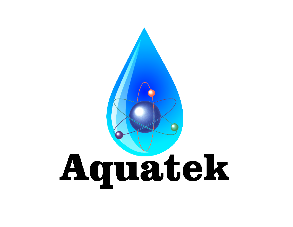Glossary of water terminology and definitions-h
Halite
A geological term for rock salt, a mineral which is more than 95 percent sodium chloride. Also known as native or fossil salt.
Halogens
A
family of elements that includes bromine, chlorine, fluorine, astatine,
and iodine. They are very active chemically. They are commonly found as
the ionic component in compounds with various other elements.
Hardness
A
characteristic of natural water due to the presence of dissolved
calcium and magnesium; water hardness is responsible for most scale
formation in pipes and water heaters, and forms insoluble "curd" when it
reacts with soaps. Hardness is usually expressed in grains per gallon,
parts per million, or milligrams per liter, all as calcium carbonate
equivalent. Temporary hardness, caused by the presence of magnesium of
calcium bicarbonate, is so called because it may be removed by boiling
the water to convert the bicarbonates to the insoluble carbonates.
Calcium sulfate, magnesium sulfate, and the chlorides of these two
metals cause permanent hardness.
Hardness Leakage
The
presence in the effluent of the type of ions present in the water being
treated. Leakage may be caused by incomplete regeneration, channeling,
excessive service water, low temperature, high concentrations of sodium
or interfering TDS in the feedwater.
Hard water
Water with a total hardness of one grain per gallon or more, as calcium carbonate equivalent.
Header
A
central piping system with two or more side outlets located at the
bottom of a water conditioning system. It's purpose is to both collect
product water as well as to distribute backwash water.
Head loss
The
reduction on liquid pressure associated with the passage of a solution
through a bed of exchange material; a measure of the resistance of a
resin bed to the glow of the liquid passing through it.
Heme Iron
Organically
bound iron that can give water a pinkish cast. It is found only in
groundwater supplies and cannot be removed by filtration. Like soluble
iron, heme iron stains fixtures with a rust or orange coloring. It may
draw clear and turn yellow or pink when exposed to oxygen.
Hemodialysis
The
process of purifying a kidney patients blood by means of a dialysis
membrane. In this process bodily waste is transferred from the blood
into a hemodialysis grade water which is beyond the membrane.
Heterotrophic
Non-disease causing bacteria
Hexametaphosphate
A
chemical, such as sodium hexametaphosphate, added to water to increase
the solubility of certain ions and to inhibit precipitation of certain
chemicals. Known as a sequestering agent, it forms a thin film that
protects metals from corrosion.
Hot Lime (soda softening)
Partially
softens water by adding lime and soda ash at a water temperature of
about 212 degrees Fahrenheit. It chemically precipitates calcium,
magnesium, iron, and silica. It also drives away carbon dioxide.
Hydraulic Classification
The
rearrangement of resin particles in an ion exchange unit. As the
backwash water flows up through the resin bed, the particles are placed
in a mobile condition wherein the larger particles settle and the
smaller particles rise to the top of the bed.
Hydrogen Cycle
A
complete course of cation exchange operation in which the cation medium
is regenerated with acid and them all cations in the water are removed
by exchange with hydrogen ions.
Hydrogen Sulfide (H2S)
A corrosive and flammable gas produced from decaying organic matter, commonly known as "sulfur".
Hydrologic Cycle
The
water cycle, including precipitation of water from the atmosphere as
rain or snow, flow of water over or through the earth, and evaporation
or transpiration to water vapor in the atmosphere. It is natures great
water conditioner since all contaminants are left behind on the earth.
Hydro Static Pressure
A
measurement of structural strength and ability to hold water pressure.
Hydrostatic pressure is more challenging to a system than air pressure
because air will compress and absorb impact, whereas water will not.
Hydroxyl
The term used to describe the anionic hydroxide radical (OH-) which is responsible for the alkalinity of a solution.
